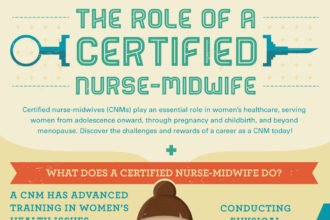A major megatrend in medicine will be the use of vaccines to prevent or treat (non infectious) chronic illnesses.
Although we tend to think of vaccines for preventing infections there are now two vaccines that prevent cancer (via preventing the infections that are in part causative), one vaccine on the market to treat residual cancer and many vaccines in development to prevent or treat other cancers and treat or prevent some of our most vexing chronic illnesses such as atherosclerosis, Alzheimer’s and diabetes, type 1.
A major megatrend in medicine will be the use of vaccines to prevent or treat (non infectious) chronic illnesses.
Although we tend to think of vaccines for preventing infections there are now two vaccines that prevent cancer (via preventing the infections that are in part causative), one vaccine on the market to treat residual cancer and many vaccines in development to prevent or treat other cancers and treat or prevent some of our most vexing chronic illnesses such as atherosclerosis, Alzheimer’s and diabetes, type 1.
The hepatitis B vaccine was developed to prevent that form of hepatitis but since many cases of hepatoma (primary liver cancer) are caused by hepatitis B, it follows that this vaccine can prevent this cancer. Hepatoma is not very common in the United States but is quite common in various developing countries where hepatitis B is endemic. Widespread use of this vaccine would not only reduce worldwide morbidity from hepatitis but markedly reduce the incidence of this cancer.
Cervical cancer is caused predominately by a few strains (mostly 16 and 18) of human papilloma virus (HPV). Merck and Glaxo have each developed a vaccine to prevent infection in young sexually active adolescent females and women. When administered before the onset of sexual activity, it is extremely effective. And it is becoming increasing recognized that about 70% of mouth and throat cancers are caused by HPV as well, presumably as a result of oral sex. So here is another real benefit of the vaccine many years down the road. HPV also causes genital warts in males and anal cancer in men and women. For all these reasons it would be wise to immunize boys as well as girls with this vaccine and this has now been recommended by the CDC Advisory Committee on Vaccines. It is unfortunate that this vaccine has become something of a political football in the current Republican presidential primary debates. The vaccine is expensive at approximately $360 for the required three doses. Compare that however to the cost of about $4 billion in direct medical expenses for cervical cancer, much more for oral cancer, and the cost benefit is great. But the benefit is a long time coming and the cost is immediate. Since cervical cancer and oral cancer occur in greater frequency among the more socio-economically disadvantaged, vaccine cost becomes a defining factor. Health departments which frequently make vaccines available at little or no cost have declining budgets in this time of financial duress so widespread free vaccination is not likely for now.
A vaccine to treat residual prostate cancer (Provenge) was approved by the FDA within the past year. It might be called a “personal” or “designer” vaccine because it is produced by taking the patient’s own immune cells, attaching an antigen and re-infusing them. The T cells are thus directed to find and destroy PSA producing cells, i.e., the cancer cells. The benefits of this vaccine relative to its expense are subject to reasonable question. Men who get the vaccine live only a few months longer than those who do not yet the cost is near to $100,000. However, the vaccine is currently only licensed for those who have failed all other treatments, not the best timing for immune therapy. In general, one would like to use an immunological approach in patients with minimal residual disease after primary treatment.
Another prostate cancer treatment vaccine (Prostvac) has had reasonable results in clinical trials and will probably be submitted to the FDA shortly for consideration as well. It utilizes genetically engineered cowpox to carry PSA and reportedly has a somewhat better response rate. In a trial of 125 men with hormone refractory prostate cancer, those who were vaccinated lived 8 months longer than those who were not.
These are just two of many vaccines designed to treat residual cancer. So far they have been used for patients that have had standard treatments and have evidence of relapse and are no longer responsive to usual treatments. In the future I would predict that the truly useful vaccines will be used when there is only microscopic cancer remaining after usual therapy with surgery, radiation and or drug therapy in patients who are otherwise in good health and can respond with a good immune response to whatever vaccination. Immune therapy has been a goal of cancer treatment for decades with limited success. It seems certainly probable, but not certain, that vaccines will ultimately have an important role in future cancer treatment armamentariums.
There are numerous vaccine studies in progress to prevent and to reverse the damage of Alzheimer’s disease which is predicted to affect one in eight Americans during their later years. The national Institute of Aging of the NIH has some exciting results of animal models of Alzheimer’s disease with regression of plaque following vaccination. A Viennese company, AFFiRiS, has completed phase one testing of their vaccine and found it safe and tolerable. And although the number of patients was small and it was not controlled they found stabilization of cognitive ability in 9 of 12 patients over an 18 month observation period. Those that did not have a good response were those with more advanced disease. A phase 2 study, with support from Glaxo, of some 400+ patients is beginning with results expected by late 2012.
Bapineuzumab has been reported to prevent and possibly reverse some of the plaque buildup in Alzheimer’s. It is a monoclonal antibody to beta amyloid and is being tested on a large number of patients in a phase 3 study with backing from both Pfizer and Johnson and Johnson. (Originally developed by Élan and Wyeth, the Élan property was sold to J&J and Wyeth was acquired by Pfizer.) Preclinical studies demonstrated improvement in mice that would otherwise develop plaque and lose some cognitive abilities. Another candidate vaccine is being administered nasally at Tel Aviv University with the hope of preventing both Alzheimer’s and the attendant vascular damage that can lead to strokes. This vaccine, based on a Glaxo vaccine technology, is said to activate macrophages to attack and remove the amyloid proteins. The researchers have found in animal trials that this vaccine can prevent brain damage and possibly restore already damaged tissue.
There are also a number of atherosclerosis vaccine studies in progress. The fundamental concept is that LDL activates our immune defense mechanism which in turn creates an inflammatory response in the blood vessel walls. There is no reaction in the blood stream itself but once LDL is laid down in the intima, T cells become activated and the inflammation results. It is this inflammation that leads to plaque buildup and ultimate rupture with thrombosis and downstream infarction. In animal models, a vaccine against the T cells that recognize LDL minimizes the inflammation that would result from the immune reaction reducing the disease by well over 50%. But that may be too simple an explanation. Perhaps it is a chronic inflammatory disease mediated by our immune system which is responding not only to LDL but also related proteins and lipids and possibly infectious agents as well. If so then the approach to vaccination might well be much more complicated. That said, when investigators have used peptide sequences from apoB-100 of the protein component of LDL for vaccination, they have observed substantial reduction in plaque and atherosclerosis formation. The efficacy was best in younger animals suggesting that in humans early vaccination may be pivotal to success. This should lead to clinical trials in the next few years but there will need to be standards proposed as to what constitutes success. One would not want to wait 30 or more years to determine efficacy so surrogate endpoint markers will be needed.
There are also a number of vaccines in progress for type 1 diabetes. Diabetes is an autoimmune disease that usually strikes in adolescence or young adulthood. The cause is unknown but the process can be detected years before overt diabetes by measuring antibody forming against the islet cells. In time the islet cells are destroyed and blood sugar rises as insulin is no longer produced or produced in adequate amounts. In Australia, scientists have been developing a nasal vaccine which desensitizes the immune response to insulin. Phase 1 studies are complete and later stage trials in Australia, New Zealand and Germany are underway. One vaccine, from Selecta Biosciences given nasally to young people with antibody but not overt disease, showed a depressed immune response. The investigators believe that this may be an approach to multiple autoimmune diseases. The idea is to develop an antigen-specific tolerogenic vaccine while not damaging the normal immune response to pathogens and other foreign invaders. Theoretically if a person recently diagnosed with type 1 diabetes was vaccinated, there might be hope for preserving whatever islet cells still existed and perhaps for some regrowth. Or, should stem cell therapies prove effective, the vaccine would prevent the autoimmune mechanism from destroying the newly implanted stem cells and their daughter cells. One other study by Diamyd Medical and funded by Johnson and Johnson showed a minor positive result but not at the level needed for further evaluation. It has been shelved and J&J has ceased its participation.
Such are the trials and tribulations of clinical research. However, it does appear that viable vaccines will be available in the not too distant future for Alzheimer’s disease, possibly atherosclerosis and many autoimmune diseases including diabetes mellitus type 1. Cancer prevention and cancer treatment vaccines will also become increasingly available and may indeed prove highly useful in the final eradication of remaining cancer cells – at least that is the hope. Certainly the hepatitis B and the HPV vaccines are effective today. From Jenner and smallpox to atherosclerosis, cancer, diabetes and Alzheimer’s is quite a jump, an impressive medical megatrend at that.






